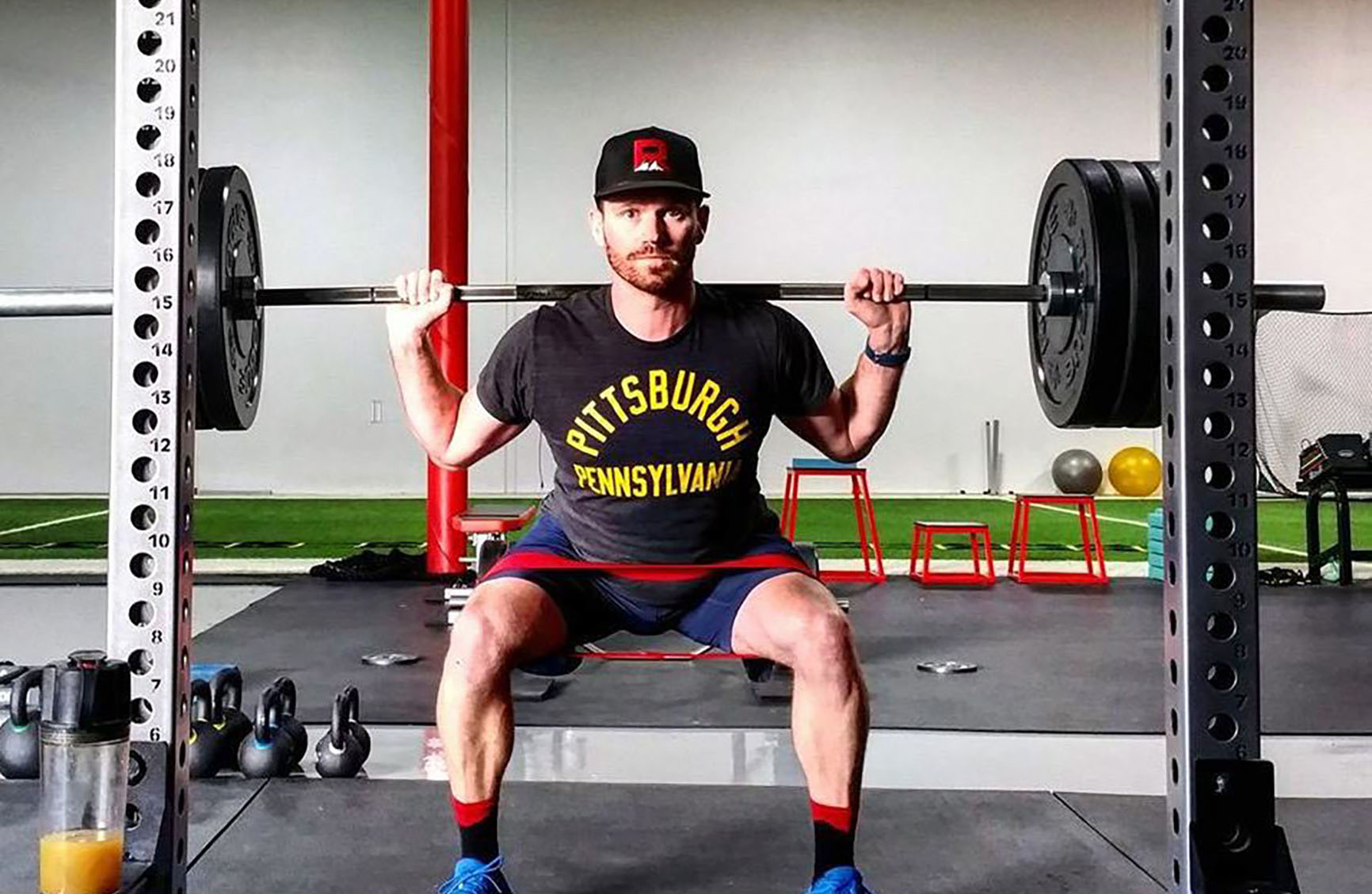Meet Dane DeLozier — a collegiate football player turned mountain biker when he’s not busy taking care of his patient base.
Dane holds a Doctorate of Physical Therapy and is an entrepreneur, who helps people get back to physically performing at their best. Dane’s clinic has been in business for more than 3 years and offers a unique end-to-end care approach using precision technology to capture and address poor movement.
His clinic moves people from injured (and suffering from acute pain) to sport-performance ready. Dane achieves this with a blend of physical therapy, cutting edge technology using 3D motion capture, and EMG to determine weak links in his patients.
You can’t pass up an opportunity like TrueCoach. Your clients will thank you and you’ll have more time to grow your business.
Dane Delozier
Founder of Revo PT
Then uses these specific data analysis to care and/or give specific exercises to bring his patients back to sport-performance ready.
To get to where Dane is now wasn’t easy.
Throughout his years of college, he was taught the old school way of business for physical therapists, which was the insurance business model. He would have to double book himself with 20 patients and bounce between 2-3 patients at once. He was so booked up, Dane even had an assistant to help perform basic treatment on some clients.
Seeing 3 patients simultaneously and stuffing the calendar with 20 or more bookings, meant that in an 8-hour day, each patient would actually get a total of 8 minutes or less of care. And after the 8 hours was done, there were unpaid hours doing charting and patient follow up.
He knew this was against his values of how client’s care should be. The old way of doing this destroyed the quality of experience for the patients. It also didn’t help that insurance reimbursement was going down, which would mean having to see more patients to make up for it.
While working in a traditional clinical model he noticed a need… most of the people he treated would go from injured to “fixed” to performing to injured again.
And being a mountain biker himself, Dane ended up working with mostly outdoor endurance athletes like mountain bikers, climbers, skiers, and runners.
But here’s what he noticed..the old care model didn’t have the capability to accomplish bridging the gap between acute injury and sport performance.
In the old model, there was no system in place to take an athlete from acute injury…then move them to retrain muscles to become stronger, build stability, or knock off weak links so they don’t become injured again…then finally back to sport performance.
So he ventured out on his own to make the idea of end-to-end care a reality.
This end-to-end care model wasn’t like the old insurance business model… he didn’t want to see a person 2-3x a week. He wanted to get them better as quickly as possible in the clinic and speed the recovery process up outside the clinic.
In his new model of care, clients would see a doctor of physical therapy 1:1 for 60-mins to get a full assessment. From the assessment, an exercise regimen is developed. This exercise prescription address strengths and weaknesses, so patients go from injured to sports-performance ready and prevents re-injury.
This road wasn’t easy with all the information they’d need to track between charting notes and workout prescriptions.
Danes’ system to manage this was called the “loose paper method”.
It combines…
- Spreadsheets of workouts
- Handouts with pictures of exercise demos
- Recorded exercise videos that were uploaded to YouTube…Sometimes a few exercises would be stick figures on paper if there were no demo videos
And then, there’s communication…
- Email follow-ups
- Email patients and describe what they should be doing
- Multiple conversations spread out in different emails, then trying to piece it together when changing a patient’s program…And it can take a while when you have to search your inbox for an email from 3 months ago with a video to see how they moved then vs. now
The “loose paper method” was a nightmare… the hours weren’t better from when he worked at a traditional clinic, Dane would spend 12 hours a day just on managing 20 patients PLUS the day-to-day work of running a business was waiting for him after he finished with his patients.
With this “loose paper method,” patient communication was scattered everywhere. Dane found that patients stopped caring and follow-through fizzled. And when you’re not face-to-face, doing these workouts on your own, there’s no “connection,” so compliance slowly dies because you’re left on your own.
In pursuing this new client care model, Dane’s personal life also took a hit. It was ALL work and very little play. If time allowed he would do the whole weekend warrior thing and get back to work for 12+ hours a day starting Monday (…sometimes it would start on Sunday).
Being an innovator in the industry, he quickly realized this was a drain on his time. He tried paying for a custom app to hook into the booking system… and the costs soared to get it built, and he still didn’t have everything he needed.
Then, a friend introduced Dane to TrueCoach…
Now how can a workout app help a clinic?
It was hard concept to understand at first… and Dane didn’t know what he didn’t know… because the mindset of getting this doctorate to working the assembly line insurance model was ingrained… “This is the way it’s always been done, so we’re going to do it.”
What he knew was the traditional clinic software that was used in this industry. And adopting new software was almost like a taboo…
Dane was already disrupting the common model when it came to patient care… so why not dive into something innovative to support it?
And at the same time, in dealing with acute injuries, there are thousands of exercises — from small isolated movements with bands to big functional movements with the barbell — it would be a waste of time to create thousands of handouts and write the instructions, only to have paper end up in the recycle bin or emails lost somewhere in the inbox.
It just didn’t make sense to work 16 hour days and try to have a life outside of work.
What intrigued Dane about this workout app was the ability to create videos and link the videos to an exercise once and be able to create a program and have that video linked automatically.
This way, his clients who trusted him when working at the clinic can see him also demonstrating what he wants his patients to do on video from their mobile phones or desktop. The days of the all too common PT technique of drawing stupid stick figures on paper, then handing it to his patients, were done.
This was the start of changing the game to allow the vision of care to unfold quicker, and the videos were the start.
TrueCoach also allowed comments and videos to be uploaded to specific workouts, which kept ALL information to that specific workout. It freed him from email hell. And more importantly searching emails and piecing together conversations from 3, 4, 5 months ago on his patients’ progression.
This has allowed the heavy use of video critiquing to help his patients stay connected to him without being in the clinic.
He could check if they’re doing the workouts and who left comments in minutes from his phone or desktop.
With TrueCoach’s features letting him know who completed a workout for the day and who missed 1 more more workouts, he can focus his time on where its really needed and help his clients get back on track. Whether that be due to them having a stressful day or week, and he can plan and adjust their progression for next week based on what’s going on in their lives.
With compliance numbers, Dane could quickly find out who is overreaching and who is progressing fast and adapt a program based on the individual.
Dane was able to create and adapt programs on real-time data, which allowed him to be fast and agile with practical exercise prescriptions and blend his theoretical knowledge with it. TrueCoach became the vehicle to quickly put in what works and throw out what doesn’t for his patients.
He had laser-focused coaching, rather than the old method of trying to guess what and why clients aren’t getting better… what was really going on in their lives and adjust, so they can progress rather than regress.
This allowed more flexibility for creating a client experience and depending on the patient. Whether it be a weekend warrior or a competitor, he could create 3-month blocks of programming, month to month, and even week-to-week and manage 15 active clients in 10 minutes!
That 10 minutes included critiquing a movement on a video that was sent and replying to comments for clients.
Then, the snowball effect happened… It allowed Dane to work ‘ON’ his business rather than working in his business, which allowed him to grow from 20 clients to 75 clients all over the world (Europe, South America, all over the US, and even Asia).
Not only did it allow him to take more clients and provide a high touch service, he was able to streamline his service as he grew. He used the template feature to create protocols for common injuries to start and adjust to the individual such as:
- Thoracic protocols
- Ankle rehab protocols
- Hip mobility protocols
Now with a team of 4 physical therapists and 5-7 coaches working under him, his team all use TrueCoach to manage their client’s care progression and each one will have between 20-75 clients as well.
This scalability for growth allowed Dane to reach more people and make this vision become an effective reality blending physical therapy with sports performance.
Locally his business grew as well. They had to move out of their 1,400 square foot clinic to an 8,000 square foot warehouse.
Sometimes a great idea can work, if you have the right tools to support it. Dane was able to use TrueCoach for end-to-end care and bridge the gap for patients who want to move from acute injury to sports-performance.
Get Started With A Free 14-Day Trial
Try TrueCoach completely risk-free for 14 days. Cancel any time.

Article by Clare Hudson
First published: November 08 2023
Last updated: April 15 2025


